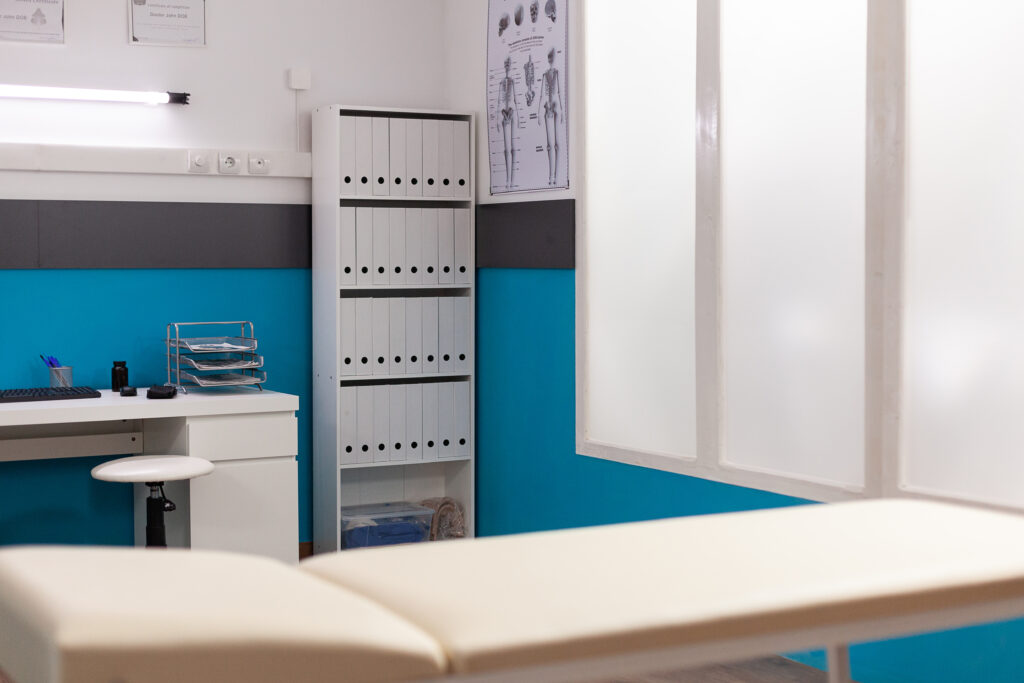Business Planning & Strategy, Financial Models
Chiropractic Clinic Business: Costs, Revenue & Profitability
Chiropractic clinics operate in a recurring, cash-friendly segment of allied health focused on spinal care, musculoskeletal pain relief, and functional wellness. Demand is stable, driven by sedentary lifestyles, aging populations, and growing acceptance among mainstream health consumers. However, many practices underperform due to reliance on low-ticket adjustments, poor patient retention, and underutilization of service breadth. Profitability hinges on throughput, treatment plan adherence, and layered service integration.
Asset Configuration
CapEx is low to moderate. The model emphasizes treatment efficiency, requiring well-configured open bays, a small number of private rooms, and optional rehab/exercise areas. A typical clinic includes 3–6 adjusting tables, 1–2 consult rooms, reception, and a decompression or rehab zone. Total space: 1,200–2,500 sq. ft.
| Asset Category | Cost Range (USD) | Notes |
|---|---|---|
| Chiropractic Tables (3–6 units) | $15,000 – $40,000 | Drop tables, flexion-distraction, elevation platforms |
| Reception & Admin Area | $10,000 – $15,000 | POS, seating, patient education displays |
| Exam & Private Consult Rooms | $10,000 – $20,000 | Posture analysis, X-ray viewing, desk setup |
| Rehab/Decompression Equipment | $10,000 – $25,000 | Foam rollers, TENS units, traction tables |
| Software & EHR | $5,000 – $10,000 | SOAP notes, scheduling, patient reminders |
Total CapEx: $50,000 – $110,000, with lower ranges for high-volume models (e.g., open-bay franchises). Equipment leasing or shared-use models can reduce CapEx further but may constrain branding.
Revenue Model
Revenue stems from initial consultations, adjustment packages, treatment plans, and ancillary services (rehab, decompression, soft tissue therapy). Pricing ranges from $60–$100 per adjustment and $150–$250 for the initial exam/X-rays. Prepaid care plans (e.g., 24 visits over 3 months) and wellness memberships stabilize cash flow.
Upsell levers include supplements, orthotics, spinal decompression sessions ($40–$80), and insurance-based care when applicable. Corporate wellness, sports performance, and auto-injury rehabilitation (PIP, LOP) add diversification.
Annual Revenue Potential for a 2-Chiropractor Clinic, Moderate Volume
| Revenue Stream | Volume Assumption | Annual Revenue (USD) |
|---|---|---|
| Adjustments (Recurring Visits) | 8,000/year @ $70 avg. | $560,000 |
| New Patient Intakes | 400/year @ $200 avg. | $80,000 |
| Care Plan Prepayments | 250 plans @ $1,200 avg. | $300,000 |
| Decompression & Rehab Add-ons | 1,000 sessions @ $60 avg. | $60,000 |
| Products (Supplements, Braces) | $600/week avg. | $31,200 |
| Corporate Wellness Contracts | 3 clients @ $10,000 avg. | $30,000 |
| Total | $1,061,200 |
High-throughput clinics (>400 visits/week) with disciplined plan adherence and strong retention can exceed $1.5M–$2M/year. Low-utilization clinics focused solely on single-session care often plateau at $300K–$500K.
Operating Costs
Labor is lean with 1–2 DCs (Doctors of Chiropractic), 1–2 assistants, and a front desk/admin. Supplies and consumables are minimal. Most clinics operate without billing insurance, minimizing admin overhead.
| Cost Category | Annual Cost (USD) |
|---|---|
| Chiropractor Compensation | $365,000 – $420,000 |
| Admin & Support Staff | $85,000 – $105,000 |
| Marketing & Patient Acquisition | $85,000 – $125,000 |
| Rent & Facility Ops | $105,000 – $130,000 |
| Software & CRM Systems | $20,000 – $30,000 |
| Supplies & Maintenance | $20,000 – $30,000 |
| Total | $680,000 – $840,000 |
Efficient clinics with prepaid packages, multi-doctor throughput, and upselling discipline achieve 30–35% EBITDA margins. Low plan adherence, poor patient retention, or discount-heavy models compress margin to <15%.
Profitability Strategies
Key metrics: visits per chiropractor per day (VPCPD) and care plan conversion rate (CPCR). Benchmarks: VPCPD > 25 and CPCR > 70%. Maximize utilization via staggered scheduling, short-visit protocols (5–10 min), and digital onboarding.
Revenue predictability is anchored in treatment plans and not drop-in care. Offer structured programs (e.g., “12-week spine reset”) with clear clinical objectives and prepaid pricing. Package decompression and rehab for chronic or postural cases to raise ARPU.
Use education-driven consults to shift patient mindset from symptomatic relief to preventive care. Monthly wellness memberships ($99–$199/month for 2–4 visits) extend LTV and improve patient compliance.
Cost efficiency stems from assistant-led rehab stations, front-desk automation, and local referral networks (massage therapists, personal trainers, ortho clinics). Maintain a lean team with cross-trained roles and automate rescheduling/follow-up workflows.
So what?
A chiropractic clinic is not a visit-based wellness shop but rather a protocolized, high-volume spinal care engine. Profitability is built on care plan adoption, visit density, and predictable retention. Operators who structure their clinical flow, upsell through outcomes, and optimize schedule capacity can achieve 30–35% EBITDA with <$110K CapEx. In spinal care, volume matters but structured value delivery is what compounds margin.

Are you considering opening your Chiropractic Clinic business? Download the comprehensive Chiropractic Clinic Business Financial Model Template from SHEETS.MARKET to simplify your financial planning. This tool will help you forecast costs, revenue, and potential profits, making securing funding and planning for success for your Chiropractic Clinic business easier.



